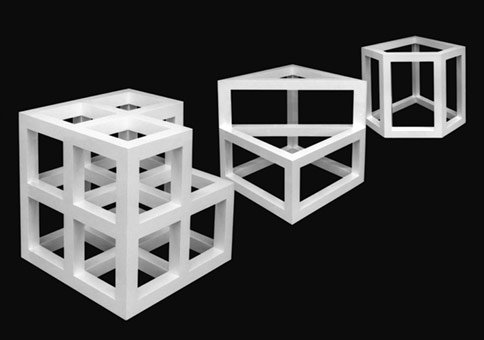Exact+different
dal 27/2/2008 al 17/5/2008
Segnalato da
Josef Albers
Jost Amman
Carl Andre
Max Bill
Hanne Darboven
Theo van Doesburg
Marcel Duchamp
Albrecht Durer
Max Ernst
Herbert W. Franke
Naum Gabo
Heinz Gappmayr
Raoul Hausmann
Johannes Itten
Donald Judd
On Kawara
Paul Klee
Brigitte Kowanz
Fernand Leger
Sol LeWitt
Mario Merz
Laszlo' Moholy-Nagy
Piet Mondrian
Bruce Nauman
Roman Opalka
Michelangelo Pistoletto
Arnulf Rainer
Ad Reinhardt
Kurt Schwitters
Georges Vantongerloo
Ruth Vollmer
Peter Weibel
Wolfgang Drechsler
Gabriele Werner
Dieter Bogner
27/2/2008
Exact+different
Museum Moderner Kunst MUMOK, Wien
Art and mathematics from Durer to Sol Lewitt. The exhibition the connections between the ways art and mathematics conceive reality. On show more than 300 works from 120 artists including: Josef Albers, Jost Amman, Carl Andre, Max Bill, Hanne Darboven, Theo van Doesburg, Marcel Duchamp, Max Ernst, Herbert W. Franke, Naum Gabo, Piet Mondrian, Bruce Nauman, Roman Opalka, Michelangelo Pistoletto, Arnulf Rainer and many others. Curated by Wolfgang Drechsler in cooperation with Gabriele Werner and Dieter Bogner.

curated by Wolfgang Drechsler in cooperation with Gabriele Werner and Dieter Bogner
Mathematics is everywhere: The exhibition Exact and Different considers the connections between the ways art and mathematics conceive reality. 120 positions demonstrate how questions of mathematics have influenced art in the 20th century. Magic squares – such as the one found in Dürer’s Melencolia I (1514) – along with the bold perspective constructions in the Renaissance have continued to fascinate artists. Beginning in the 20th century, it is in turning away from central perspective that the artists such as Juan Gris, Henri Laurens or Giacomo Balla looked for inspiration in mathematics; where for the Cubists the simultaneous representation of many different viewpoints, the segmentation of reality into geometrical building blocks, would be the central theme, the Futurists would concentrate on the acceleration of the world through the dynamicism of forms.
The corresponding abstraction and detachment from phenomenal reality would then culminate in concrete art, where Theo van Doesburg, Georges Vantongerloo and Max Bill would champion the use of pure forms of art based on geometrical forms – here again, mathematics provides the basis for these ideals and claims. Beginning with Kasimir Malevitch, the square itself would again and again return as the object of painting. Countless artists, from Paul Klee to Bruce Nauman, from Josef Albers to Peter Weibel have created their own interpretations based on this simple form.
Marcel Duchamp, Man Ray and Surrealists such as Max Ernst were interested in natural sciences and mathematics, especially Henri Poincaré’s work. Constructivists such as Naum Gabo and Antoine Pevsner were likewise inspired by geometrical and mathematical models.
The convergence of art and mathematics is again important in the 1960s where Carl Andre, Donald Judd and Sol LeWitt often produced formally reduced, systematic and serial works with simple geometric primary forms. At the same time, the first computer art works based on algorithms began to appear.
The exhibition will show more than 300 works from 120 artists including: Josef Albers, Jost Amman, Carl Andre, Max Bill, Hanne Darboven, Theo van Doesburg, Marcel Duchamp, Albrecht Dürer, Max Ernst, Herbert W. Franke, Naum Gabo, Heinz Gappmayr, Raoul Hausmann, Johannes Itten, Donald Judd, On Kawara, Paul Klee, Brigitte Kowanz, Fernand Léger, Sol LeWitt, Mario Merz, László Moholy-Nagy, Piet Mondrian, Bruce Nauman, Roman Opalka, Michelangelo Pistoletto, Arnulf Rainer, Ad Reinhardt, Kurt Schwitters, Georges Vantongerloo, Ruth Vollmer, Peter Weibel
Image: Sol LeWitt, Form Derived from a Cube, 1986, Dauerleihgabe Österreichische
Press
DI.FH Eva Engelberger Mag. Michaela Zach
P +43-1-525 00-1400, 2384 F +43-1-52500-1300 press@nospammumok.at
Opening: February 28, 2008–7.00 p.m.
MUMOK
Museumsplatz 1 - Wien



